The Barkleys of Broadway

Brief Synopsis
Cast & Crew
Charles Walters
Fred Astaire
Ginger Rogers
Oscar Levant
Billie Burke
Gale Robbins
Film Details
Technical Specs

Synopsis
In New York, on the opening night of their new show, Josh and Dinah Barkley, a husband and wife musical comedy team, quarrel when Josh accuses his wife of flirting with French playwright Jacques Pierre Barredout. Jacques has suggested to Dinah that she leave musical comedy theater to play tragic roles, but Josh wants her to continue as his partner. The following day, the Barkleys' producer, Ezra Miller, introduces the couple to the hopelessly untalented singer Shirlene May, who has been signed as Dinah's understudy. Later, at the Flandreau Art Gallery, Dinah is disgusted by a portrait of herself and Josh, and is insulted when the artist likens Josh to Svengali and implies that Dinah is under Josh's spell. One weekend, the Barkleys and Ezra visit Jacques at his country home in Danbridge, where Jacques is celebrating the completion of his new play. The play, about the life of Sarah Bernhardt, is to star Pamela Driscoll, a second-rate actress. When Dinah criticizes Jacques' casting decision, he agrees with her and tells her that she would be the better choice. Back in New York, Josh discovers that Dinah has secretly been rehearsing for the leading role in Jacques' play, and accuses her of having an affair with the playwright. The ensuing quarrel results in the Barkleys' separation and the end of their professional association. Josh performs his next show without Dinah, while Dinah continues to rehearse her part in Jacques' play. As she is unaccustomed to dramatic acting, Dinah's initial rehearsals prove disastrous. In the hopes of reuniting the Barkleys, Ezra tricks Dinah and Josh into performing together at a Mercy Hospital benefit show. The Barkleys give a crowd-pleasing performance, after which Josh suggests a reconciliation. Dinah rejects Josh's offer, though, and tells him that he has taken her for granted for too long. Josh later attends the opening night of Jacques' play and is filled with pride as he watches Dinah give a brilliant performance as Sarah Bernhardt. After the show, Dinah discovers that Josh impersonated Jacques in many telephone calls he made to her, and she decides to get even by telling him that she loves Jacques. The news leaves Josh heartbroken until Dinah confesses her trick and professes her love for him. The Barkleys celebrate their reconciliation with a dance, and they return to the stage as a dancing team.

Director
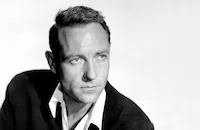
Charles Walters
Cast

Fred Astaire

Ginger Rogers

Oscar Levant

Billie Burke

Gale Robbins
Jacques Francois

George Zucco

Clinton Sundberg
Inez Cooper
Carol Brewster
Wilson Wood
Claire Carleton
Betty O'kelly
Pat Miller
Bobbie Brooks
Charles Van
Richard Winters
Mickey Martin
Dick Baron
Mahlon Hamilton
Lorraine Crawford
Dee Turnell
Reginald Simpson

Hans Conreid
Sherry Hall
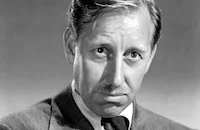
Frank Ferguson
George Boyce
John Albright
Butch Terrell
Edward Kilroy
Nolan Leary
Joseph Granby

Esther Somers
Helen Eby-rock
Joyce Mathews
Robert Purcell
Roberta Johnson
Mary Jo Ellis
Max Willenz
Jack Rice
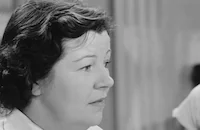
Margaret Bert
Allen Wood
Alphonse Martell
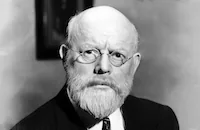
Howard Mitchell
Marcel De La Brosse
Wilbur Mack
Larry Steers
Lillian West
Forbes Murray
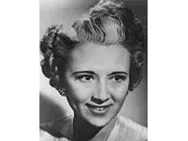
Bess Flowers
Lois Austin
Betty Blythe
Bill Tannen
Mimi Doyle

Roger Moore
Wheaton Chambers
Jean Andren
Laura Treadwell
Crew
Albert Akst
Robert Alton
Dick Borland
Hugh Boswell
Betty Comden
Jack Dawn
Otto Dyar
Roger Edens
Arthur Freed
George Gershwin
Ira Gershwin
Cedric Gibbons
Adolph Green
Sydney Guilaroff
Lennie Hayton
Irene
Eylla Jacobus
Henri Jaffa
Natalie Kalmus
Aram Khachaturian
Arthur Krams
Warren Newcombe
Hermes Pan
Irving G. Ries
Conrad Salinger
Douglas Shearer
Harry Stradling
Peter Ilyich Tchaikovsky
Robert Tucker
Valles
Charles E. Wallace
Harry Warren
Edwin B. Willis
Wally Worsley

Photo Collections
Videos
Movie Clip


Trailer
Hosted Intro


Film Details
Technical Specs

Award Nominations
Best Cinematography
Articles
The Barkleys of Broadway
Coincidentally (or maybe not - Garland's emotional problems were an open secret), Ginger Rogers had sent Freed a congratulatory telegram after a preview screening of Easter Parade. Freed remembered that, and called Rogers to ask her, tentatively, if she'd have any problem working with Fred Astaire. Although Rogers was annoyed at the question, there was reason to ask. Astaire and Rogers had not worked together in ten years, since The Story of Vernon and Irene Castle (1939). The popular partnership had ended after nine films together because Rogers wanted to be a dramatic actress. There were rumors that the Astaire-Rogers working relationship had been frosty, rumors that both denied in their memoirs. Rogers characterized it as "cordial, if distant." Astaire said, "Gin and I had often discussed the possibility of getting together for a rematch and here it was out of a clear sky." So Ginger Rogers replaced Garland opposite Fred Astaire in The Barkleys of Broadway. It was their tenth and final film together.
About the only hostility, in fact, came from Judy Garland. It was well known that it was difficult to light Rogers' face because it was covered with fine, downy hair. Garland sent Rogers a congratulatory bouquet...in a huge shaving mug. Soon after production began, Garland showed up on the set while Rogers was working, and began schmoozing with the cast and crew, causing a commotion. Rogers retreated to her dressing room, and director Charles Walters had Garland physically removed from the set.
If not outright hostility, there were tensions. As they had in the past, Astaire and Rogers disagreed on the height of her heels, and the use of weights in her sleeves. The songs, by Harry Warren and Ira Gershwin, were not particularly memorable. In fact, the best song in the score was an old George and Ira Gershwin number, "They Can't Take That Away From Me," which had been written for another Astaire-Rogers film, Shall We Dance? (1937). In that film, Astaire had sung it to Rogers, but they had never danced to it. Rogers claimed it was her idea to use the song, which worked well in the context of the story, but Arthur Freed took the credit for that brainstorm. The Barkleys of Broadway was the first (and, as it turns out, the only) Astaire-Rogers film in Technicolor, and that too caused problems. Technicolor was still relatively new, and the blinding lights were uncomfortable to work under.
When The Barkleys of Broadway opened, critics bemoaned the mediocre score, and the fact that Rogers - who had done little dancing in the intervening years - had gained some weight, and lost some of the fluidity she'd had as a younger dancer. And they thought Rogers' dramatic rendering of the "Marseillaise" was ridiculous. But overall, there was joy from critics and fans alike at the reunion. In her book about the Astaire-Rogers films, dance critic Arlene Croce states, "No musical ever got off to a better start." The number is the up-tempo "Swing Trot," and according to Croce, "it's the best thing in the movie." Unfortunately it has to be watched through the opening credits. Unobstructed by titles, that number was finally seen in all its glory in That's Entertainment III (1994). Among other delights are Astaire's solo, "Shoes with Wings On," the Astaire-Rogers duets, "Bouncin' the Blues" and "My One and Only Highland Fling," and the witty Comden and Green script.
While The Barkleys of Broadway was in production, Fred Astaire received an honorary Academy Award "for his unique artistry and his contributions to the technique of musical pictures." The Oscar was presented to him by Ginger Rogers.
Director: Charles Walters
Producer: Arthur Freed
Screenplay: Betty Comden & Adolph Green
Editor: Albert Akst
Cinematography: Harry Stradling, Sr.
Costume Design: Irene, Valles
Art Direction: Cedric Gibbons, Edward Carfagno
Music: Lennie Hayton; songs by Harry Warren and Ira Gershwin
Principal Cast: Fred Astaire (Josh Barkley), Ginger Rogers (Dinah Barkley), Oscar Levant (Ezra Miller), Billie Burke (Mrs. Belney), Gale Robbins (Shirlene May), George Zucco (The Judge), Jacques Francois (Jacques), Clinton Sundberg (Bert Felsher).
BW-110m. Closed captioning.
by Margarita Landazuri

The Barkleys of Broadway
The Barkleys of Broadway on DVD
The Barkleys of Broadway is a good but not great musical from the strongest years of the Arthur Freed unit. Fred and Ginger are still sentimental favorites but their screen images have been changed to keep up with the times. Although they're still a pleasure to watch together, the original magic has been replaced with MGM formulas and Technicolor gloss.
Synopsis: Husband and wife musical comedy team Josh and Dinah Barkley (Fred Astaire and Ginger Rogers) continually scrap, which leads their producer to introduce an understudy (Gale Robbins) into their show. That only makes Dinah all the more insecure, just as she is being pursued by a theatrical 'genius' Jacques Barredout (Jacques Francois) who flatters her with offers to play in serious drama. The Barkleys break up from the tension, leaving Josh on his own to find a way to get them back together again - with a little help from the team's composer and pal, Ezra Millar (Oscar Levant).
In The Barkleys of Broadway the great writing team of Betty Comden and Adolph Green don't even attempt the breezy fantasy of Astaire and Rogers' 1930s scripts. Either straight romance was considered too old-hat in post-war 1949 or everyone involved simply thought the stars were now too old to be dizzy lovers. This picture insists on being "about something," scoring lazy points from easy targets like theatrical pretension and misguided modern art. In place of inspired innocence, we get a cheerful blandness.
For Josh and Dinah, falling in love is something that happened 'years ago.' They're afflicted with Movie Marriage Sickness, squabbling over petty issues for no good reason. Their breakup is a mild upset, the presumed end to most relationships. The 'old' Fred and Ginger lived in a fantasy world that somehow dodged miseries like divorce; they seemed eternally in love with love itself. Here they're brought down to Earth to bicker about mundane matters.
The script not only makes Fred and Ginger imperfect, it does so on unequal terms. The original duo shared a proclivity to jump to conclusions and make assumptions about people, but now only the insecure Rogers has career doubts and questions her husband's sincerity. She believes everything bad she's told about him, while he always gives Rogers the benefit of the doubt. Astaire blames only himself and remains ever hopeful that she'll return, unselfishly providing career help along the way.
Comden and Green's big script contribution is a telephone game in which Josh Barkley pretends to be his estranged wife's new director, to give her useful performance advice in her new role as Sarah Bernhardt. The glimpse we see of Rogers in the Bernhardt role is pretty confusing. Her French doesn't sound bad but the scene is neither emotionally moving nor funny. Then again, she is playing opposite George Zucco ...
The script draws no verdict on bad theater except to paint the show's director as an oily wife-poacher. The only other cultural joke is a sloppy jab at modern art, with the clownish Hans Conreid as a charlatan painter. His surreal masterpiece is an eyesore that casts Dinah as a pancake in Josh's griddle pan.
Fred's special effects dance with some magic dancing shoes is the number that gets all the attention. The emotional standout is a reprise from Shall We Dance of the Gershwin standard They Can't Take That Away from Me. Director Charles Walters sets the stage for an RKO-style number that works just fine the old-fashioned way. The rest of the songs are by Harry Warren with lyrics by Ira Gershwin. An unwelcome element comes with two piano pieces by Oscar Levant, MGM's comedy relief man guaranteed to depress the Karma of any musical. Levant's cultured hypochondriac cynic is even less appealing than usual.
Warners' DVD of The Barkleys of Broadway is attractively transferred, a bit dark perhaps but with almost no damage and practically every shot in good color registration.
The docu featurette on this one is weaker than most, with young dancers offering nuggets of insight that make us wince. The reason Astaire's characters were so good was that he was a good actor! He and Ginger were a really special couple, honest! The more informed experts fill us in on all the particulars, but The Barkleys of Broadway just isn't as fascinating as they seem to think it is.
Extras include a trailer and a Droopy cartoon called Wags to Riches about a murderous battle for the little dog's inheritance. The featurette Annie was a Wonder is a charming Passing Parade short starring the loveable Kathleen Freeman as a Swedish immigrant house worker.
For more information about The Barkleys of Broadway, visit Warner Video. To order The Barkleys of Broadway, go to TCM Shopping.
by Glenn Erickson
The Barkleys of Broadway on DVD
Quotes
I find that girl completely resistible.- Ezra Miller
Thank you. I'm touched, the piano's touched, and Tchaikovsky's touched.- Ezra Millar
Trivia
Originally planned to star Fred Astaire and 'Garland, Judy' , but when Garland became ill, Ginger Rogers took over.
Astaire had sung "They Can't Take That Away from Me" to Rogers previously in _Shall We Dance? (1937)_ , but they had never danced to it. Rogers suggested that they use the song again (this time dancing), and so it was included.
There is music playing in the background when Fred Astaire's Josh Barkley tells Oscar Levant's Ezra Millar that Jacques Barredout is a bad director for Ginger Rogers's Dinah Barkley. The song is "This Heart of Mine," which Astaire performed with Lucille Bremer in Ziegfeld Follies (1946).
This was the last film to co-star Fred Astaire and Ginger Rogers; also their first in ten years, since Story of Vernon and Irene Castle, The (1939); also their only film together in color.
The only film Fred Astaire and Ginger Rogers made for MGM.
Notes
The working title of this film was You Made Me Love You. Some contemporary reviews incorrectly refer to the film as The Berkleys of Broadway. According to a July 1948 Hollywood Reporter news item, Judy Garland, originally set for the part played by Ginger Rogers, began work on the picture but was later replaced due to an "illness." (As noted in modern sources, Garland's "illness" was widely known to be a nervous breakdown.) The film marked the screen debut of Broadway musical star Joyce Mathews, and was the first re-teaming of Fred Astaire and Ginger Rogers since their appearance in the 1939 film The Story of Irene and Vernon Castle (see AFI Catalog of Feature Films, 1931-40; F3.4333). The Barkleys of Broadway was the final film in which Astaire and Rogers were co-starred. Actor Jacques Francois was borrowed from Universal-International for this picture.
A September 1948 Hollywood Reporter news item indicates that three Harry Warren and Ira Gershwin songs written for the film were not included in the picture: "Swing Time," "The Courtin' of Elmer and Ella" and "Natchez on the Mississippi." Modern sources note that a fourth song, "Poetry in Motion," was written for the film but never used. The song "They Can't Take That Away from Me" was also used in another Rogers and Astaire film, the 1937 RKO picture Shall We Dance (see AFI Catalog of Feature Films, 1931-40; F3.3991). The Barkleys on Broadway included one of Astaire's most famous solo numbers, "Shoes with Wings On." The number, which is part of a Broadway show starring "Josh Barkley," features Astaire as a cobbler whose shoes "come to life" and dance around his shop.
A biography of producer Arthur Freed lists writer Sidney Sheldon as having contributed to the screenplay. Modern sources indicate that the final cost of the film was $2,325,420. Harry Stradling was nominated for an Academy Award in the category of Best Color Cinematography. Rogers reprised her role for a Lux Radio Theatre broadcast of the story on January 1, 1951. George Murphy played Astaire's role in the radio version.















